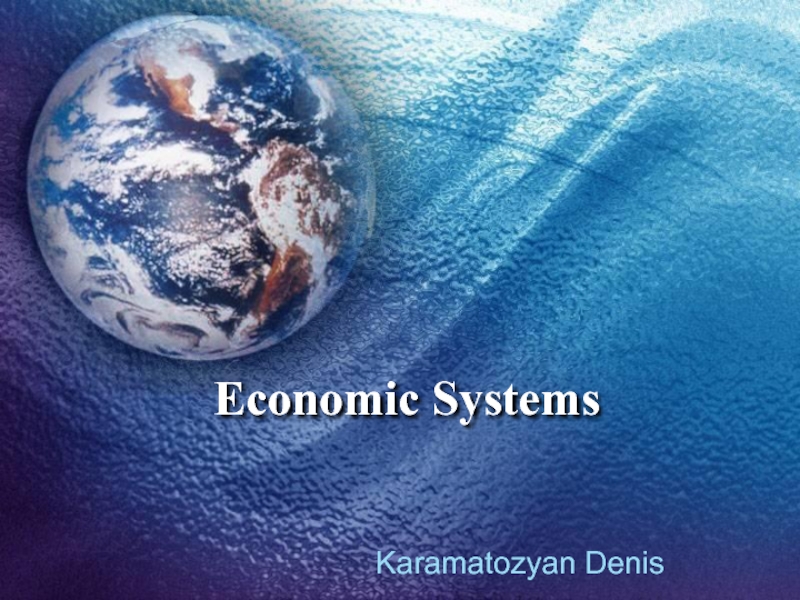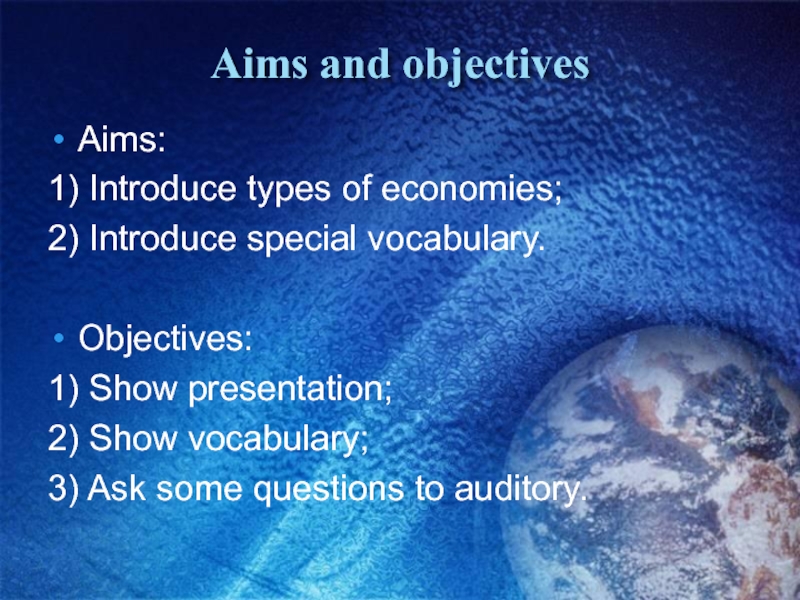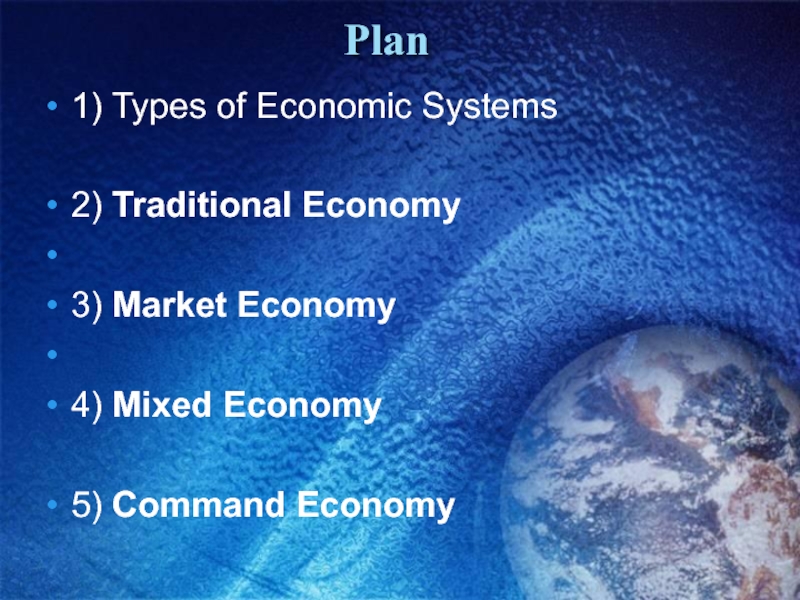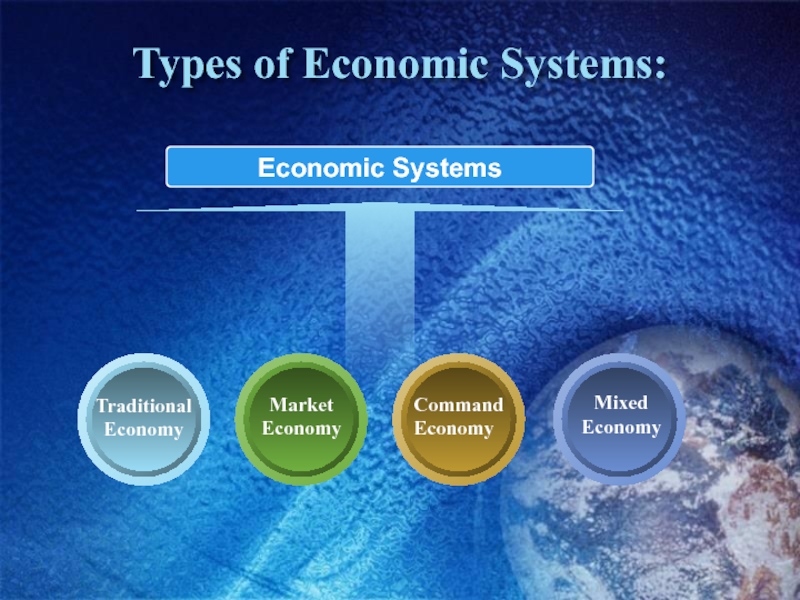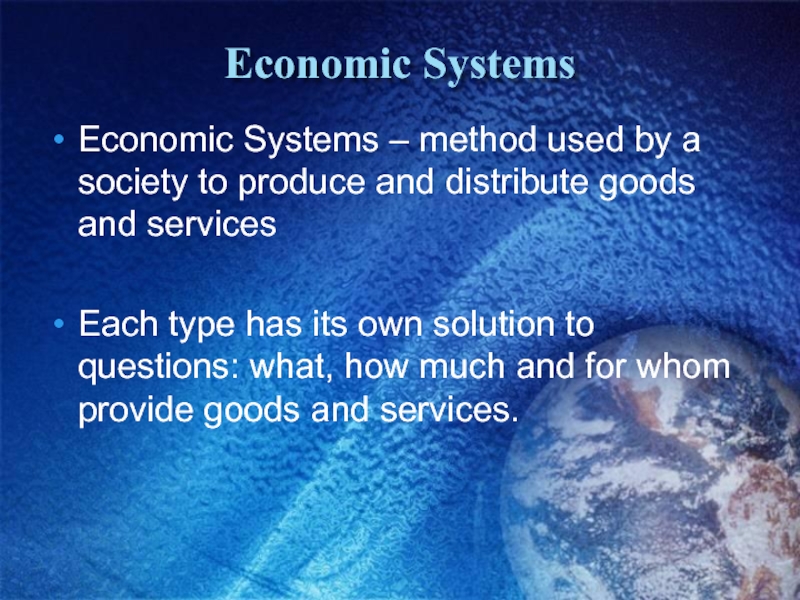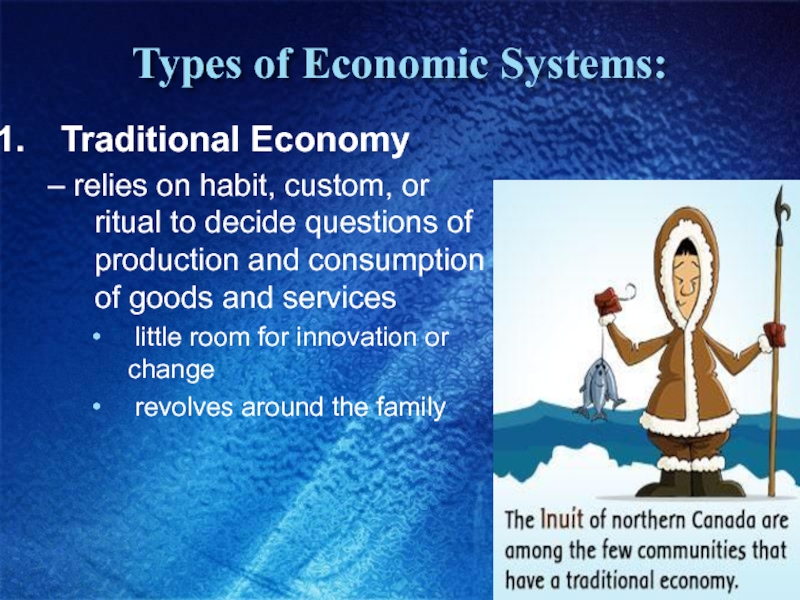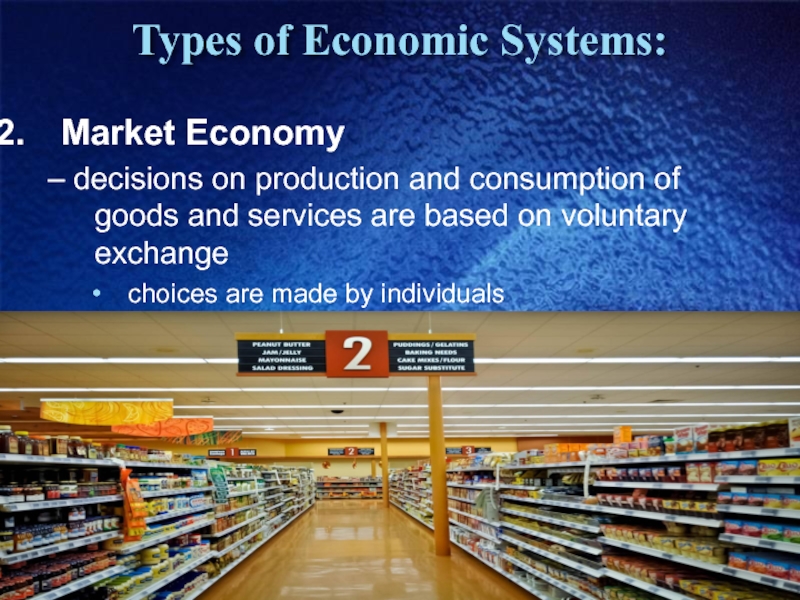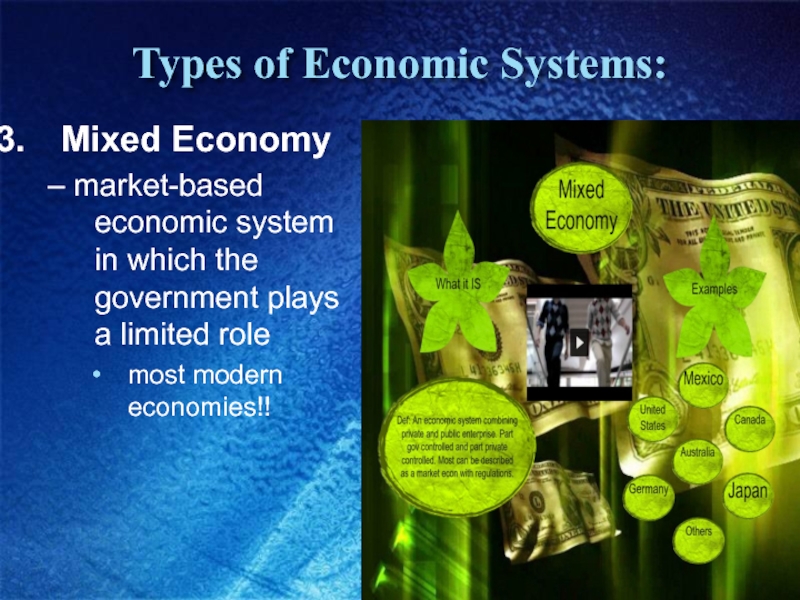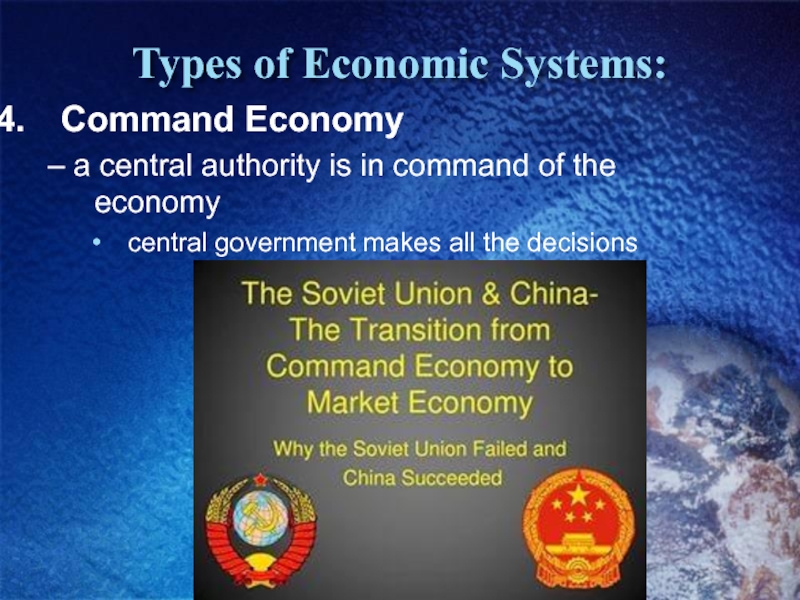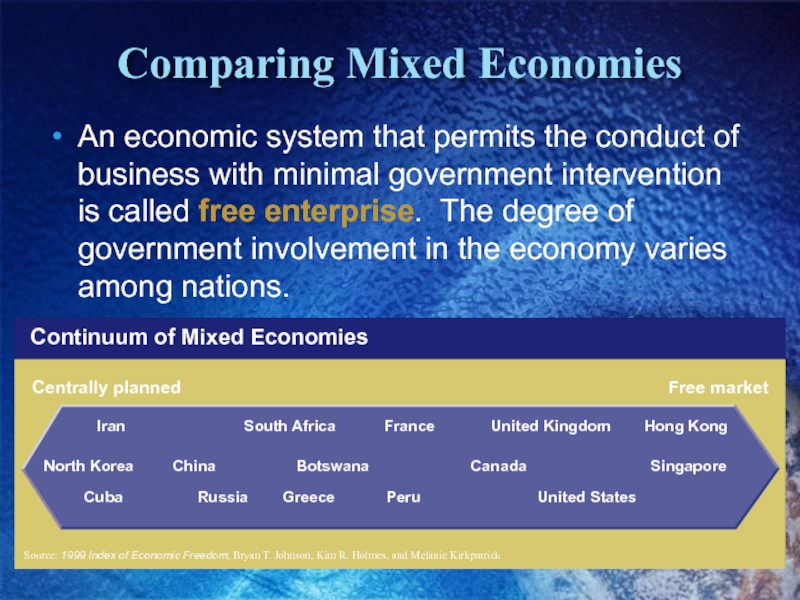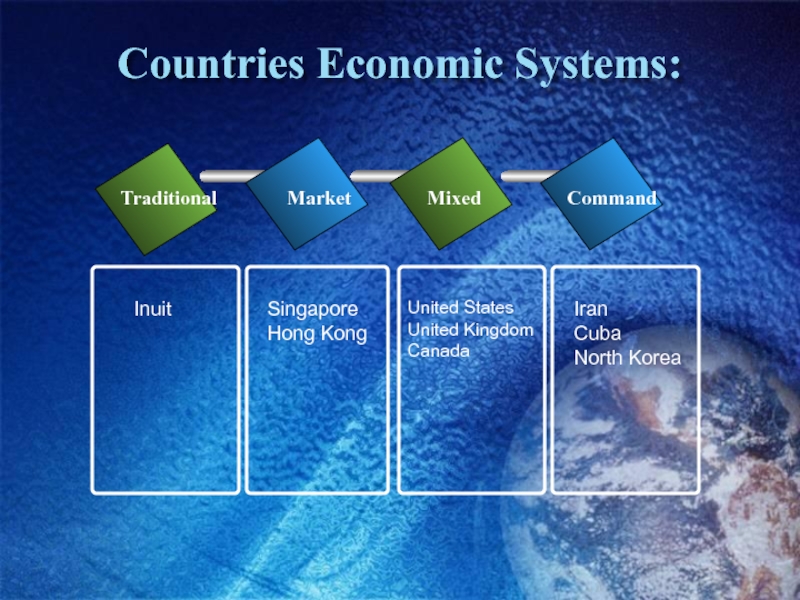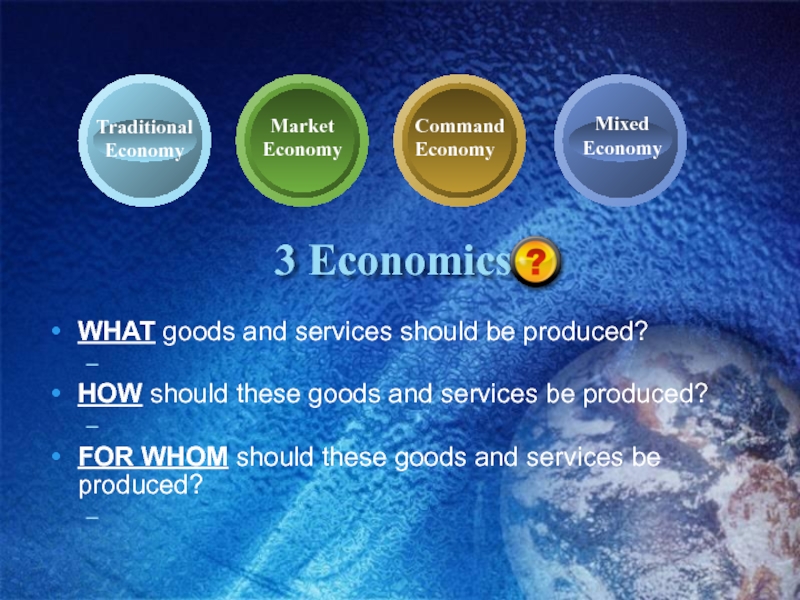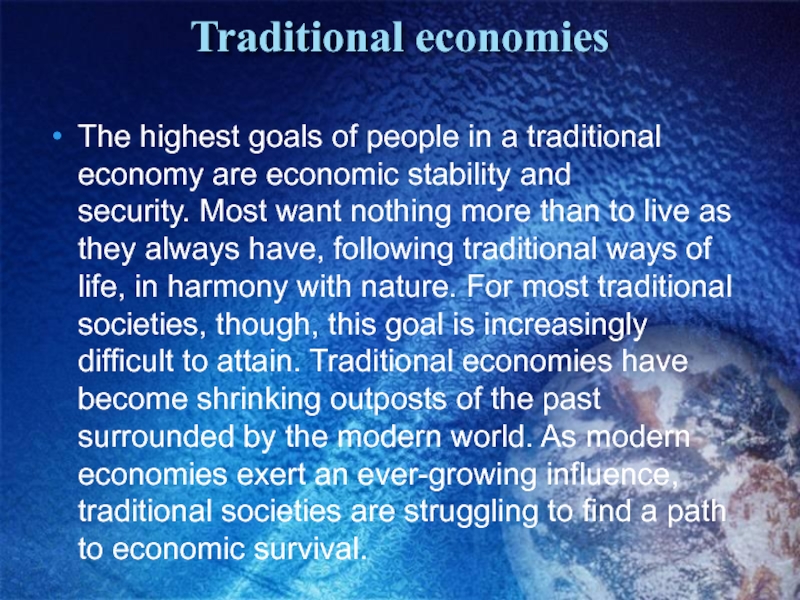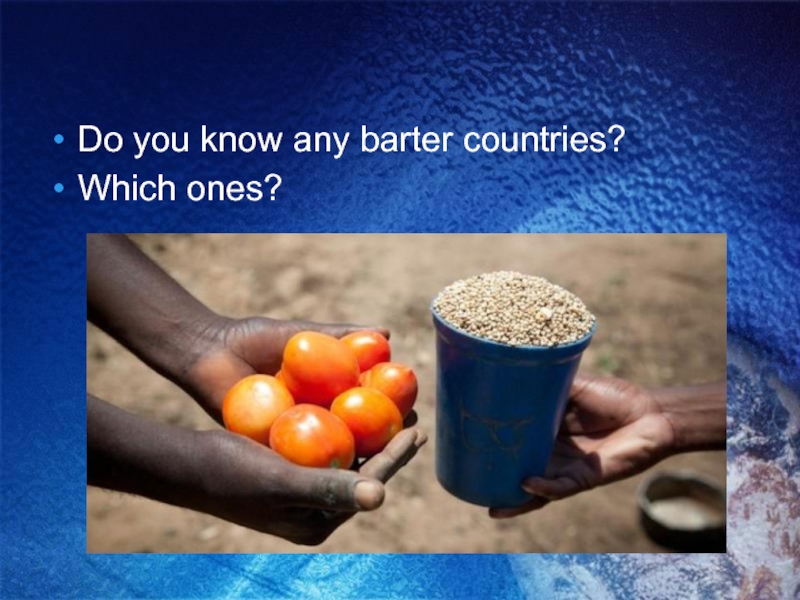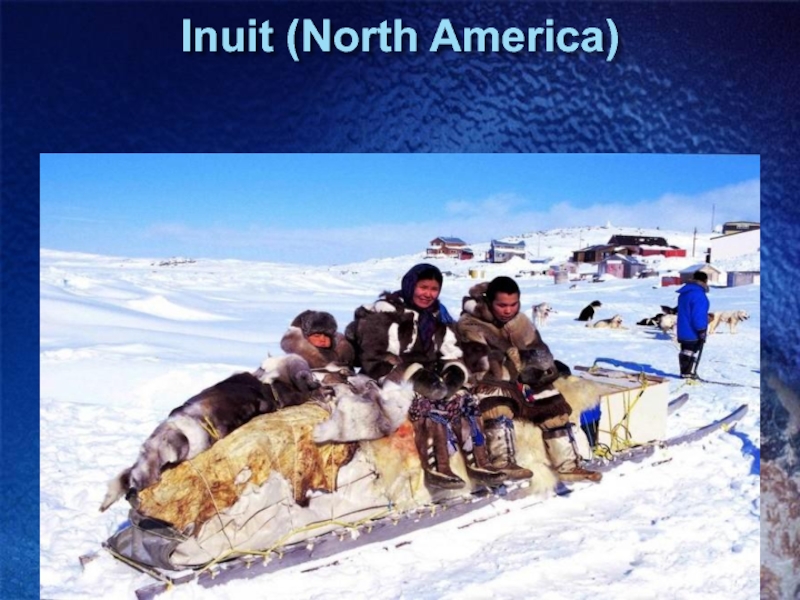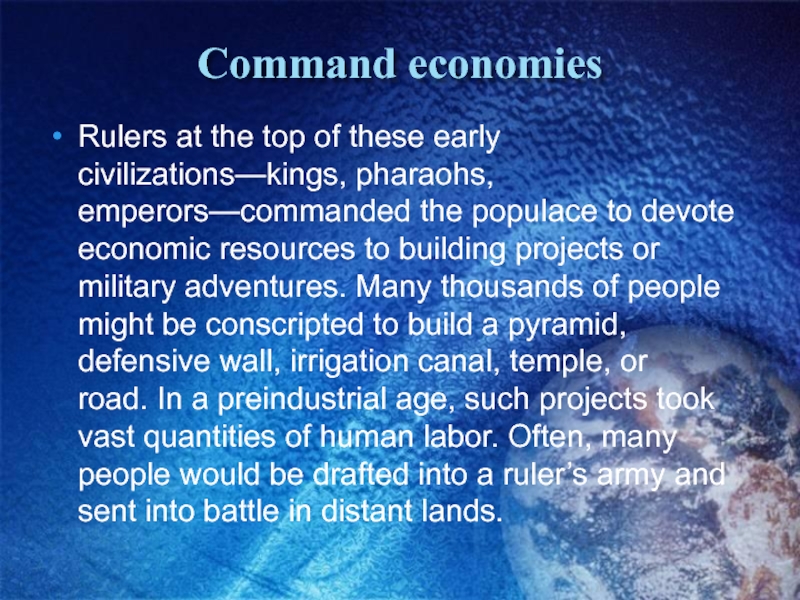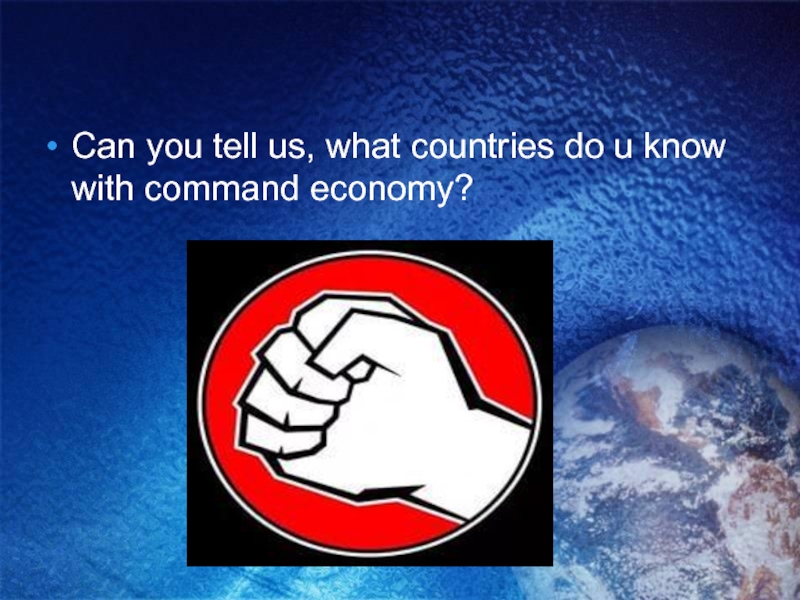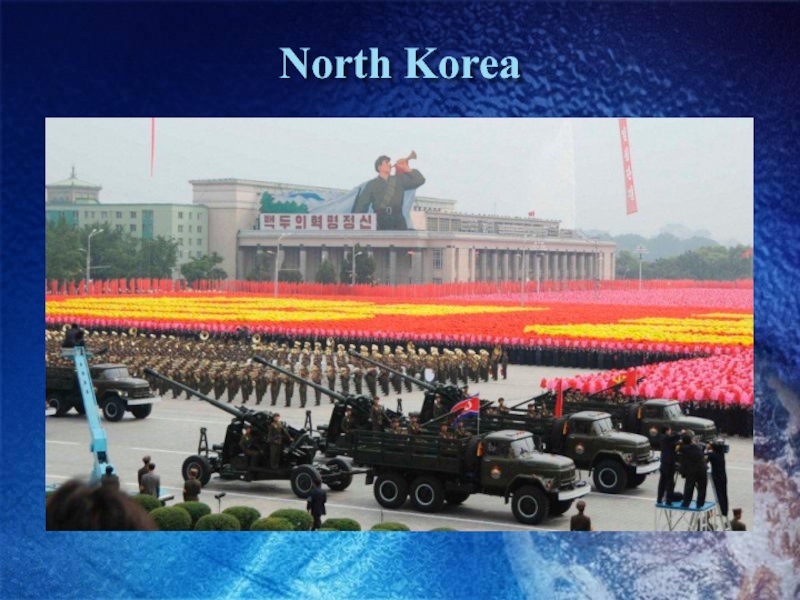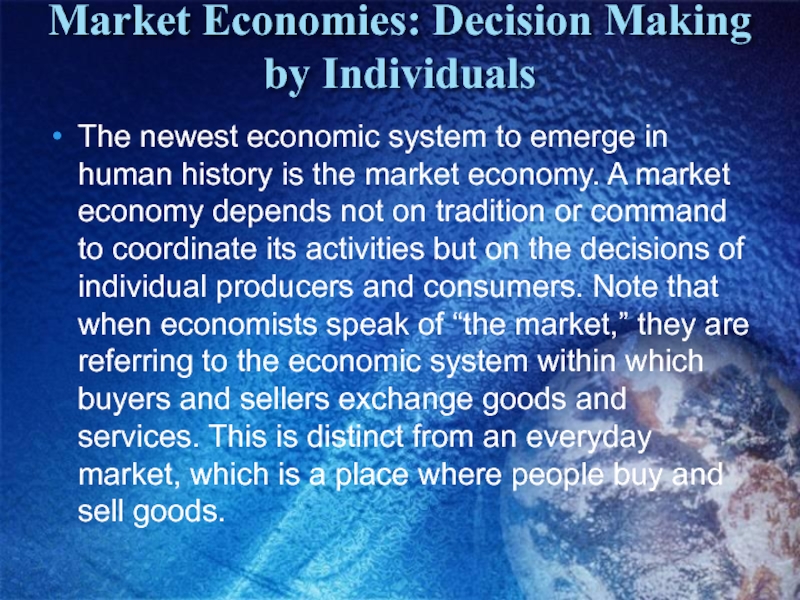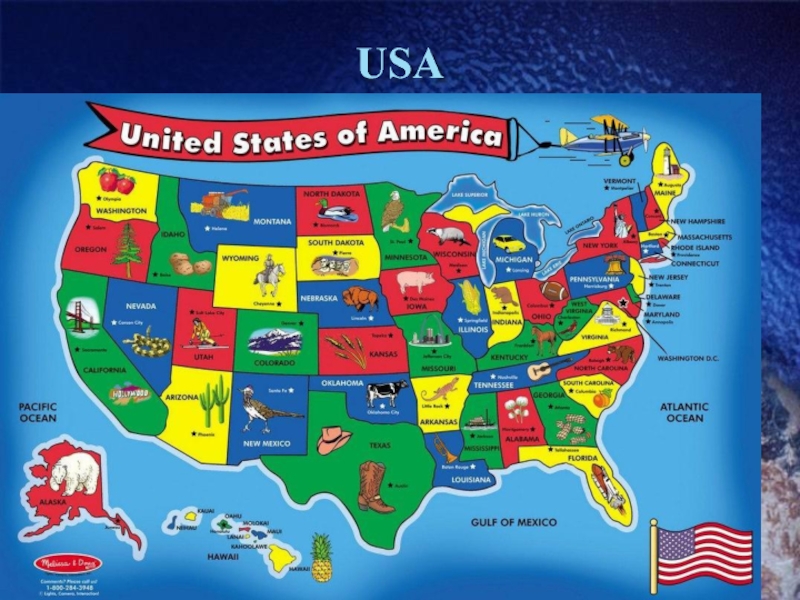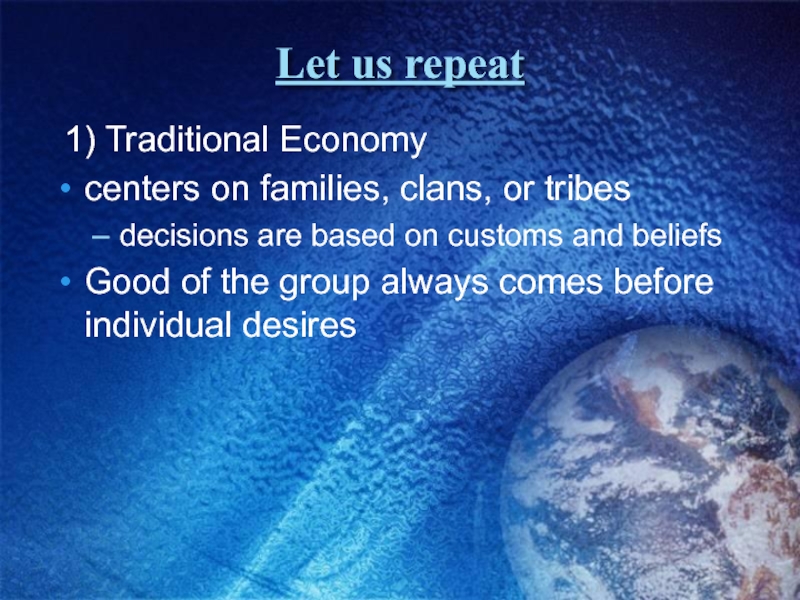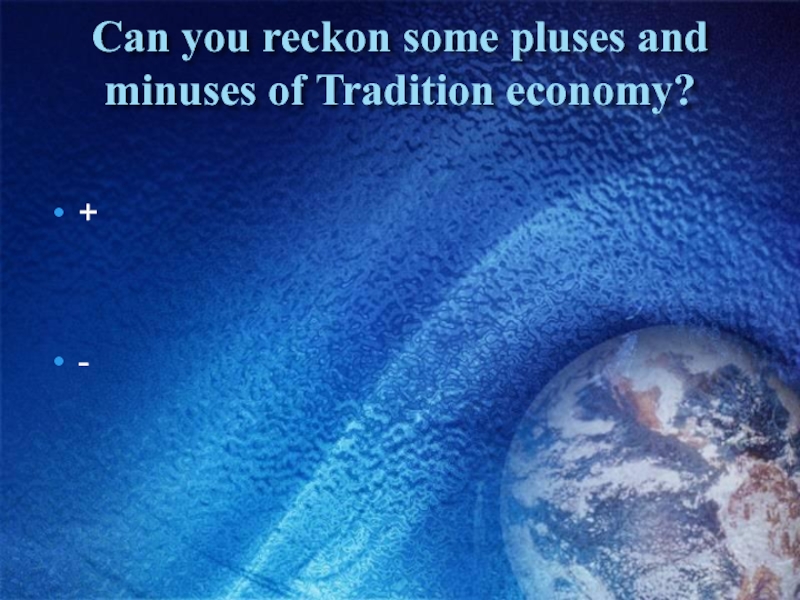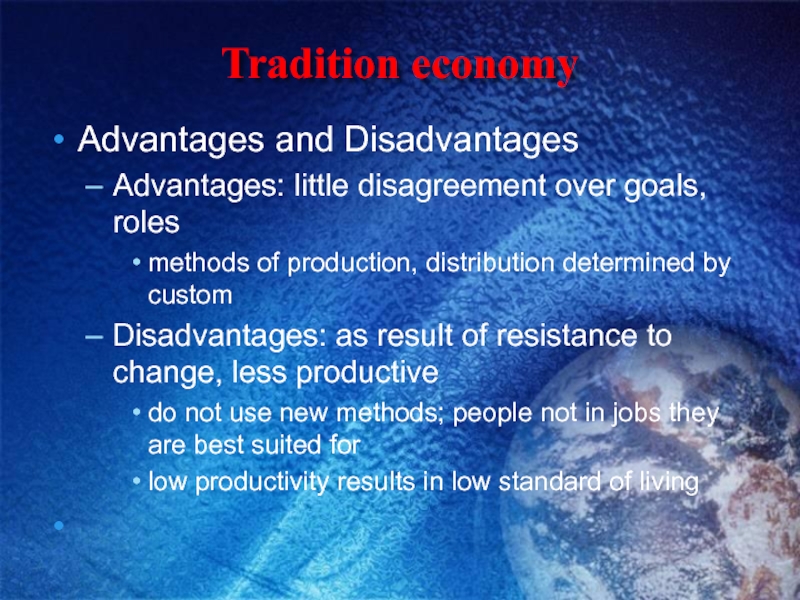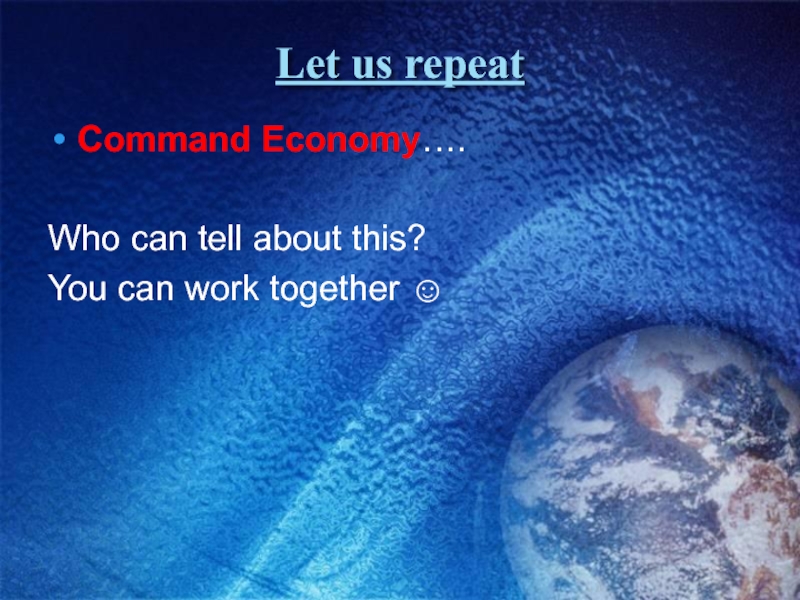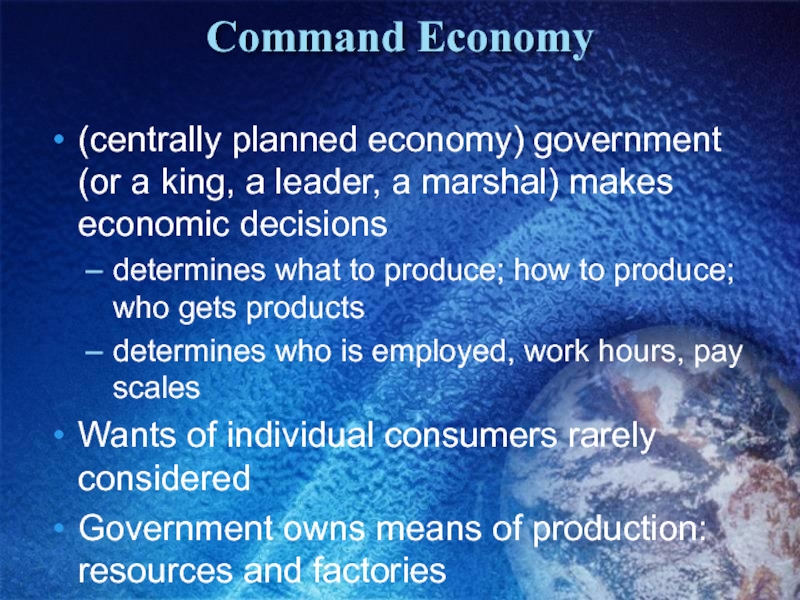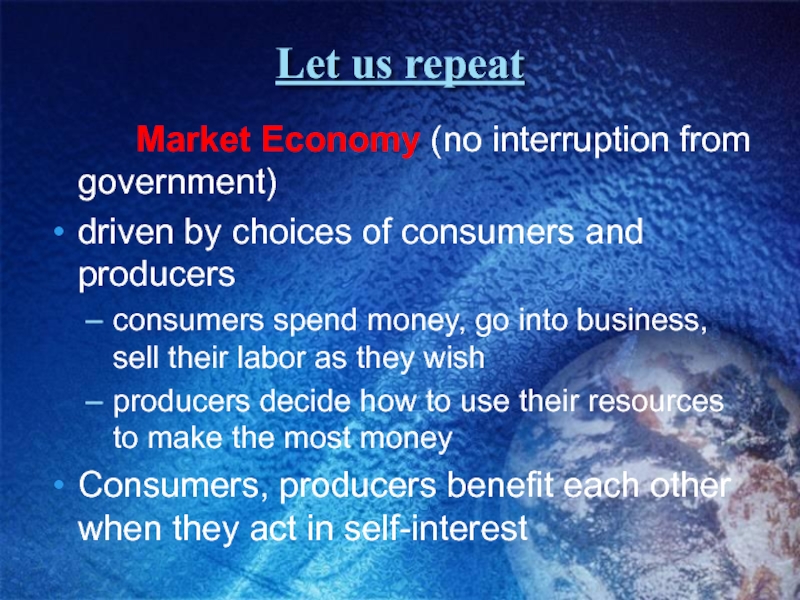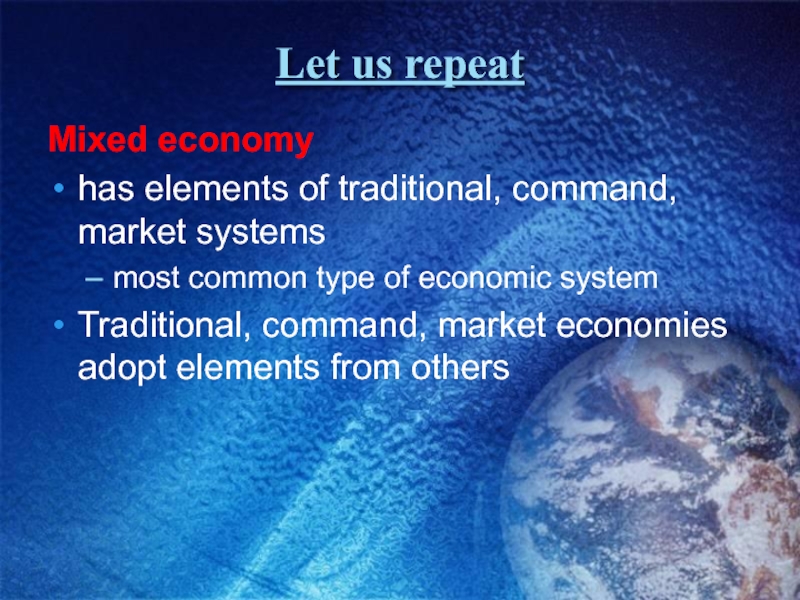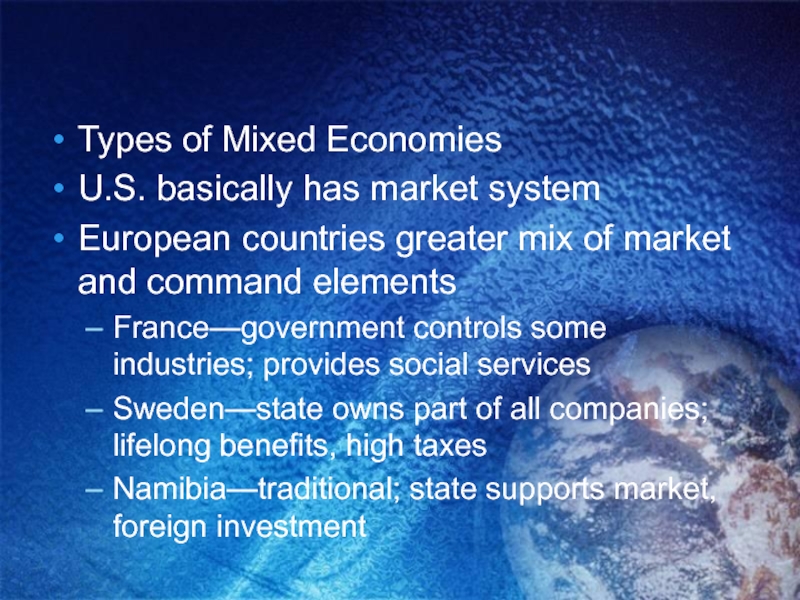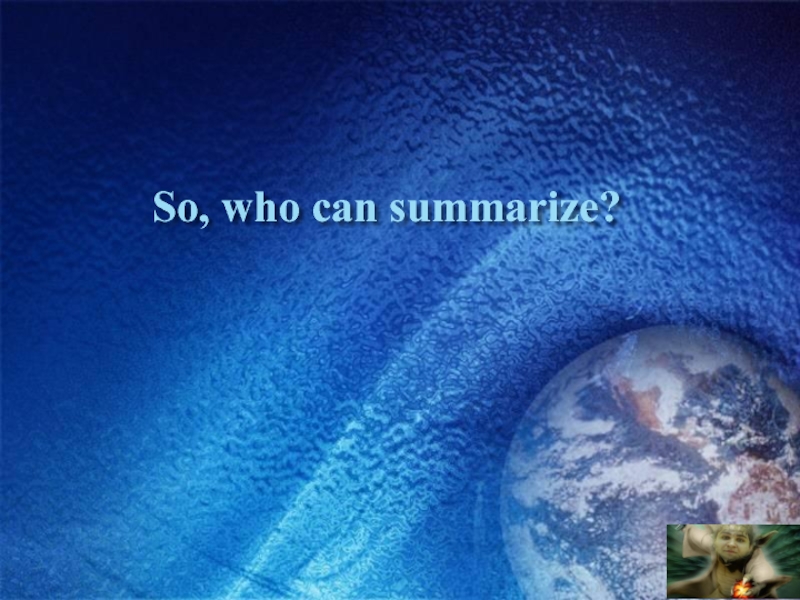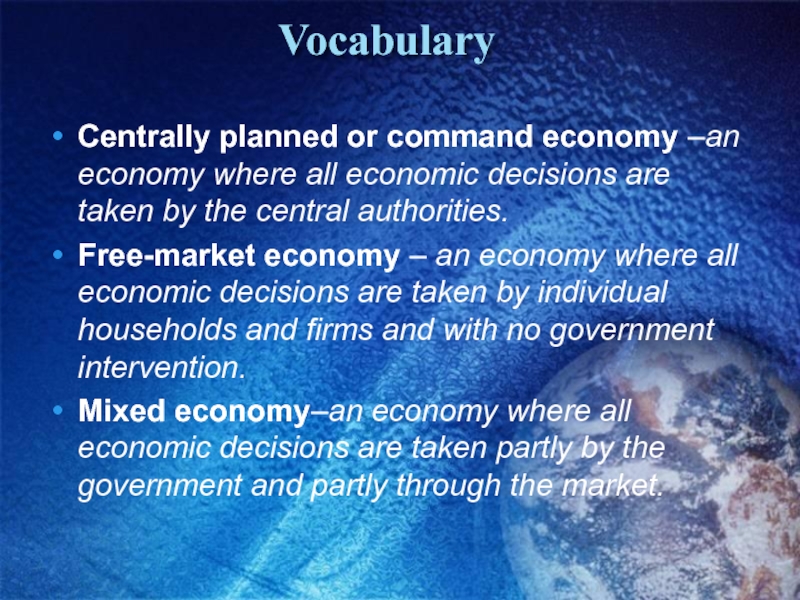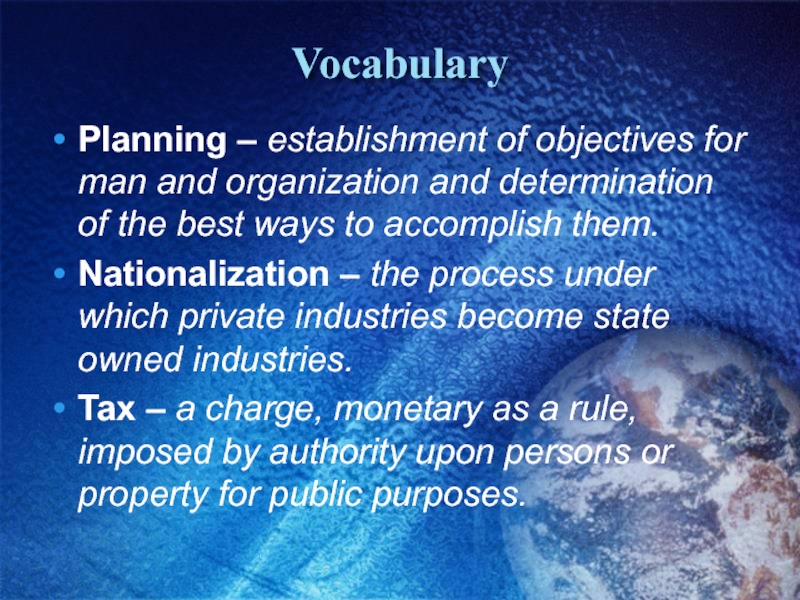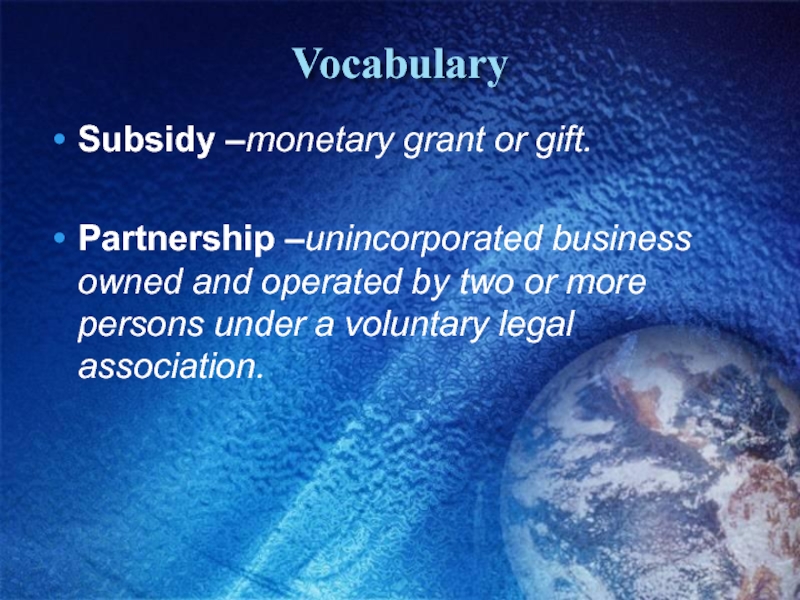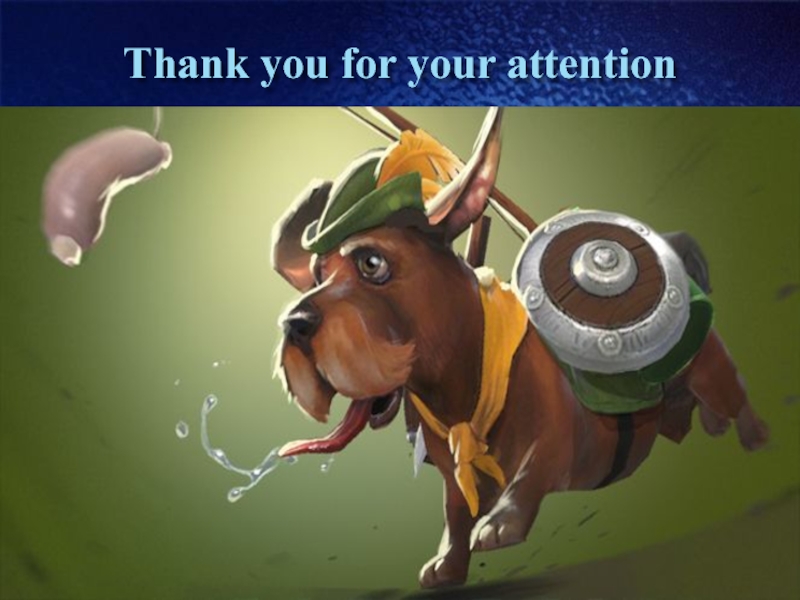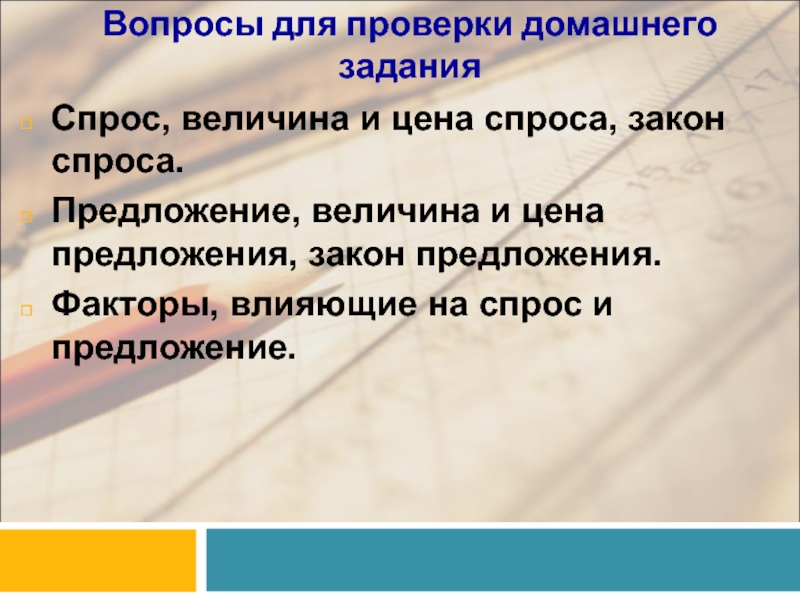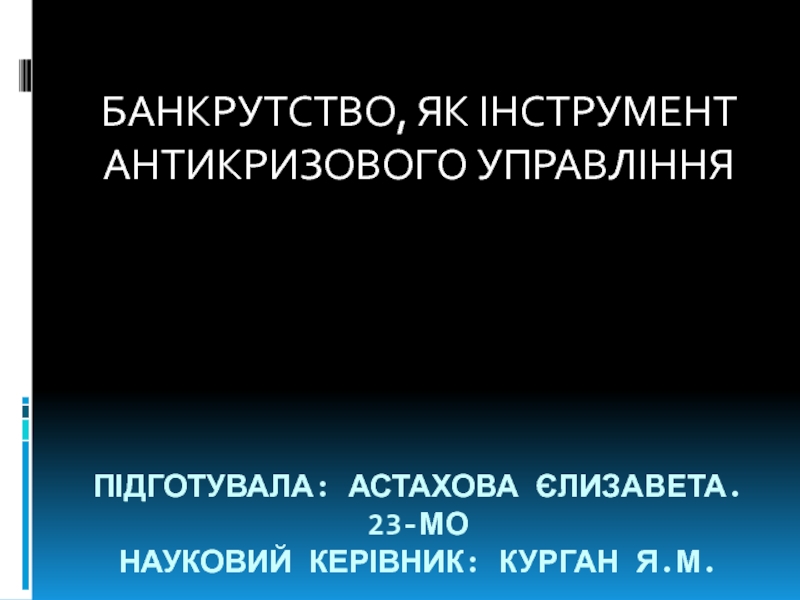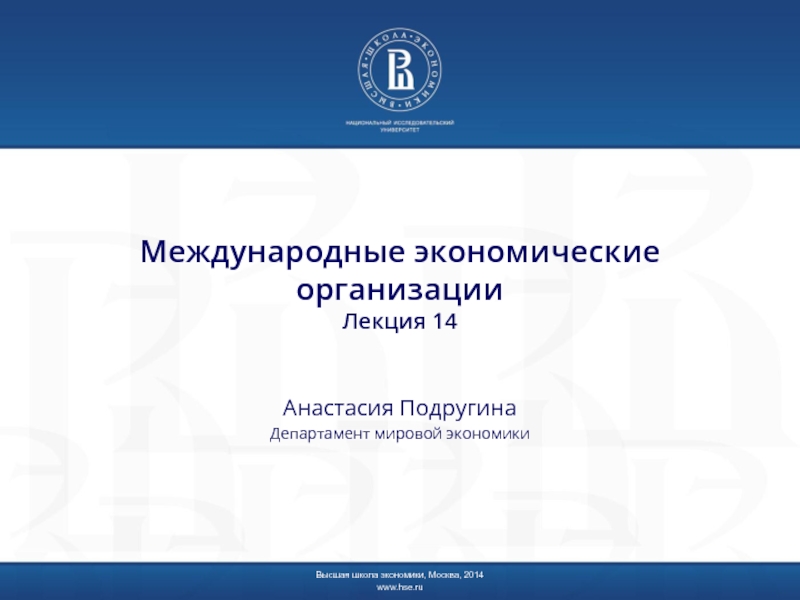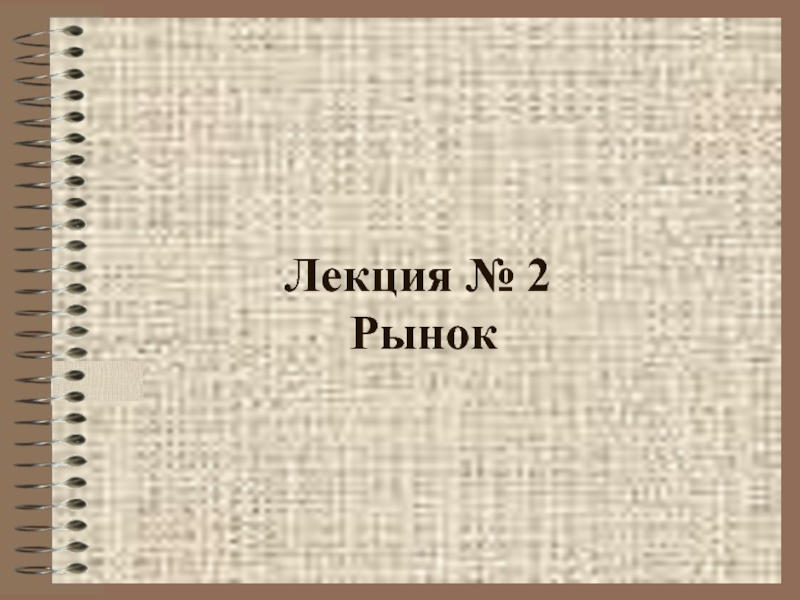- Главная
- Разное
- Дизайн
- Бизнес и предпринимательство
- Аналитика
- Образование
- Развлечения
- Красота и здоровье
- Финансы
- Государство
- Путешествия
- Спорт
- Недвижимость
- Армия
- Графика
- Культурология
- Еда и кулинария
- Лингвистика
- Английский язык
- Астрономия
- Алгебра
- Биология
- География
- Детские презентации
- Информатика
- История
- Литература
- Маркетинг
- Математика
- Медицина
- Менеджмент
- Музыка
- МХК
- Немецкий язык
- ОБЖ
- Обществознание
- Окружающий мир
- Педагогика
- Русский язык
- Технология
- Физика
- Философия
- Химия
- Шаблоны, картинки для презентаций
- Экология
- Экономика
- Юриспруденция
Economic systems презентация
Содержание
- 1. Economic systems
- 2. Aims and objectives Aims: 1) Introduce
- 3. Plan 1) Types of Economic Systems
- 4. Types of Economic Systems: Economic Systems
- 5. Economic Systems Economic Systems – method used
- 6. Types of Economic Systems: Traditional Economy
- 7. Types of Economic Systems: Market Economy
- 8. Types of Economic Systems: Mixed Economy
- 9. Types of Economic Systems: Command Economy
- 10. Comparing Mixed Economies An economic system that
- 11. Countries Economic Systems:
- 12. 3 Economics WHAT goods and services should
- 13. Traditional economies The highest goals of
- 14. Do you know any barter countries? Which ones?
- 15. Inuit (North America)
- 16. Command economies Rulers at the top
- 17. Can you tell us, what countries do u know with command economy?
- 18. North Korea
- 19. Market Economies: Decision Making by Individuals The
- 20. USA
- 21. Let us repeat 1) Traditional Economy
- 22. Can you reckon some pluses and minuses of Tradition economy? + -
- 23. Tradition economy Advantages and Disadvantages Advantages: little
- 24. Let us repeat Command Economy…. Who
- 25. Command Economy (centrally planned economy) government
- 26. Let us repeat
- 27. Let us repeat Mixed economy has elements
- 28. Types of Mixed Economies U.S. basically
- 29. So, who can summarize?
- 30. Vocabulary Centrally planned or command economy –an economy
- 31. Vocabulary Planning – establishment of objectives for man
- 32. Vocabulary Subsidy –monetary grant or gift.
- 33. Thank you for your attention
Слайд 2Aims and objectives
Aims:
1) Introduce types of economies;
2) Introduce special vocabulary.
Objectives:
1)
Show presentation;
2) Show vocabulary;
3) Ask some questions to auditory.
2) Show vocabulary;
3) Ask some questions to auditory.
Слайд 3Plan
1) Types of Economic Systems
2) Traditional Economy
3) Market Economy
4)
Mixed Economy
5) Command Economy
5) Command Economy
Слайд 4Types of Economic Systems:
Economic Systems
Traditional
Economy
Command
Economy
Market
Economy
Mixed
Economy
Слайд 5Economic Systems
Economic Systems – method used by a society to produce
and distribute goods and services
Each type has its own solution to questions: what, how much and for whom provide goods and services.
Each type has its own solution to questions: what, how much and for whom provide goods and services.
Слайд 6Types of Economic Systems:
Traditional Economy
– relies on habit, custom, or
ritual to decide questions of production and consumption of goods and services
little room for innovation or change
revolves around the family
little room for innovation or change
revolves around the family
Слайд 7Types of Economic Systems:
Market Economy
– decisions on production and consumption
of goods and services are based on voluntary exchange
choices are made by individuals
choices are made by individuals
Слайд 8Types of Economic Systems:
Mixed Economy
– market-based economic system in which
the government plays a limited role
most modern economies!!
most modern economies!!
Слайд 9Types of Economic Systems:
Command Economy
– a central authority is in
command of the economy
central government makes all the decisions
central government makes all the decisions
Слайд 10Comparing Mixed Economies
An economic system that permits the conduct of business
with minimal government intervention is called free enterprise. The degree of government involvement in the economy varies among nations.
Слайд 11Countries Economic Systems:
Traditional
Market
Mixed
Command
Inuit
Singapore
Hong Kong
United States
United Kingdom
Canada
Iran
Cuba
North Korea
Слайд 123 Economics
WHAT goods and services should be produced?
HOW should these
goods and services be produced?
FOR WHOM should these goods and services be produced?
FOR WHOM should these goods and services be produced?
Traditional
Economy
Command
Economy
Market
Economy
Mixed
Economy
Слайд 13Traditional economies
The highest goals of people in a traditional economy are
economic stability and security. Most want nothing more than to live as they always have, following traditional ways of life, in harmony with nature. For most traditional societies, though, this goal is increasingly difficult to attain. Traditional economies have become shrinking outposts of the past surrounded by the modern world. As modern economies exert an ever-growing influence, traditional societies are struggling to find a path to economic survival.
Слайд 16Command economies
Rulers at the top of these early civilizations—kings, pharaohs,
emperors—commanded the populace to devote economic resources to building projects or military adventures. Many thousands of people might be conscripted to build a pyramid, defensive wall, irrigation canal, temple, or road. In a preindustrial age, such projects took vast quantities of human labor. Often, many people would be drafted into a ruler’s army and sent into battle in distant lands.
Слайд 19Market Economies: Decision Making by Individuals
The newest economic system to emerge in
human history is the market economy. A market economy depends not on tradition or command to coordinate its activities but on the decisions of individual producers and consumers. Note that when economists speak of “the market,” they are referring to the economic system within which buyers and sellers exchange goods and services. This is distinct from an everyday market, which is a place where people buy and sell goods.
Слайд 21Let us repeat
1) Traditional Economy
centers on families, clans, or tribes
decisions
are based on customs and beliefs
Good of the group always comes before individual desires
Good of the group always comes before individual desires
Слайд 23Tradition economy
Advantages and Disadvantages
Advantages: little disagreement over goals, roles
methods of production,
distribution determined by custom
Disadvantages: as result of resistance to change, less productive
do not use new methods; people not in jobs they are best suited for
low productivity results in low standard of living
Disadvantages: as result of resistance to change, less productive
do not use new methods; people not in jobs they are best suited for
low productivity results in low standard of living
Слайд 25Command Economy
(centrally planned economy) government (or a king, a leader, a
marshal) makes economic decisions
determines what to produce; how to produce; who gets products
determines who is employed, work hours, pay scales
Wants of individual consumers rarely considered
Government owns means of production: resources and factories
determines what to produce; how to produce; who gets products
determines who is employed, work hours, pay scales
Wants of individual consumers rarely considered
Government owns means of production: resources and factories
Слайд 26Let us repeat
Market Economy (no interruption
from government)
driven by choices of consumers and producers
consumers spend money, go into business, sell their labor as they wish
producers decide how to use their resources to make the most money
Consumers, producers benefit each other when they act in self-interest
driven by choices of consumers and producers
consumers spend money, go into business, sell their labor as they wish
producers decide how to use their resources to make the most money
Consumers, producers benefit each other when they act in self-interest
Слайд 27Let us repeat
Mixed economy
has elements of traditional, command, market systems
most common
type of economic system
Traditional, command, market economies adopt elements from others
Traditional, command, market economies adopt elements from others
Слайд 28
Types of Mixed Economies
U.S. basically has market system
European countries greater mix
of market and command elements
France—government controls some industries; provides social services
Sweden—state owns part of all companies; lifelong benefits, high taxes
Namibia—traditional; state supports market, foreign investment
France—government controls some industries; provides social services
Sweden—state owns part of all companies; lifelong benefits, high taxes
Namibia—traditional; state supports market, foreign investment
Слайд 30Vocabulary
Centrally planned or command economy –an economy where all economic decisions are
taken by the central authorities.
Free-market economy – an economy where all economic decisions are taken by individual households and firms and with no government intervention.
Mixed economy–an economy where all economic decisions are taken partly by the government and partly through the market.
Free-market economy – an economy where all economic decisions are taken by individual households and firms and with no government intervention.
Mixed economy–an economy where all economic decisions are taken partly by the government and partly through the market.
Слайд 31Vocabulary
Planning – establishment of objectives for man and organization and determination of
the best ways to accomplish them.
Nationalization – the process under which private industries become state owned industries.
Tax – a charge, monetary as a rule, imposed by authority upon persons or property for public purposes.
Nationalization – the process under which private industries become state owned industries.
Tax – a charge, monetary as a rule, imposed by authority upon persons or property for public purposes.
Слайд 32Vocabulary
Subsidy –monetary grant or gift.
Partnership –unincorporated business owned and operated by
two or more persons under a voluntary legal association.
